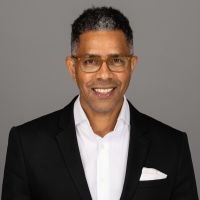
Rice said the U.S. has enough energy to quadruple its LNG exports, which from an environmental impact standpoint could lead to emissions reductions on the scale of billions of tons per year. (Source: CERAWeek by S&P Global)
The shale revolution has unlocked an amazing resource but it is far from reaching its full potential, EQT Corp. President and CEO Toby Rice said in a plenary session during CERAWeek by S&P Global.
“From an energy security perspective, we have the potential to add a Saudi Arabia [equivalent] worth of energy to the world stage, the equivalent of 10 million barrels per day of clean energy,” Rice said. “That's going to be a decarbonizing force” that brings prosperity to the world.
Rice said the U.S. has enough energy to quadruple its LNG exports, which from an environmental impact standpoint could lead to emissions reductions on the scale of billions of tons per year.
“We now need to take the benefits that we've discovered with shale and bring them to the rest of the world because it is going to be the key to lowering global emissions,” Rice said, adding that shale wasn’t “some small, tiny, little niche thing.”
“We got to focus on the big things and the things that matter. And that's our role in industry to continue to focus the world on the things that move the needle and the things that make an impact,” Rice said.
Michael Smith, Freeport LNG chairman, CEO and founder, said during the session that “the future for LNG in the U.S. is vibrant” amid U.S. export capacity that is expected to double in the next five years.
“One of the things that we created in the U.S. is no longer destination restrictions,” Smith said. “The U.S. creates that flexibility so geopolitically adding that much production from destination free sources just makes the U.S., which has the cheapest natural gas in the world, the place to develop LNG.”
Despite the short-term outlook for the U.S. LNG industry, Smith said the recent LNG pause announced by U.S. President Joe Biden was “bad policy.” Smith said “It sends a terrible message to the world, even if it's a pause and [Energy Secretary Jennifer Granholm] said it will be in the rear-view mirror.”
Smith, referring to longer-than-expected wait times for Federal Energy Regulatory Commission approval in the past, said the pause could be even worse than what Granholm suggested and even a permanent problem if the U.S. loses customers to competitors such as Qatar or Russia.
“There's a gap of time where there are customers who want to make decisions and to source LNG for 20 years and they're not going to choose the U.S. for projects that don't have their permits, they're going to go elsewhere,” Smith said.
Freeport LNG operates a three-train 15 million tonnes per annum (mtpa) export facility on Quintana Island along the Texas Gulf Coast. It’s the seventh largest in the world and second largest in the U.S., according to Freeport LNG.
On March 20, Freeport told Hart Energy that the facilities’ Train 3 was back online after completing motor repairs but that “we decided it would be prudent to proactively inspect our Trains 1 and 2, and make any necessary motor repairs to those trains.”
Train 2 is now offline and Freeport plans to take Train 1 offline imminently. “We anticipate that the inspections of Train 1 and 2 and any necessary repairs, will be completed by the May timeframe,” a spokesperson said.
RELATED
Freeport LNG Down One Train After Texas Freeze
Williams Cos. President and CEO Alan Armstrong said during the session that a focus on large-scale natural gas and LNG to supply the electricity grid would help to drive down emissions worldwide.
“[That’s] what always kind of brings you back to using natural gas and using LNG around the world to tackle this,” Armstrong said.
“But it is amazing to me the kind of conflict that we've got, all of the different things that we're going to electrify. And at the end of the day with the amount of electrification that we're taking on from data centers, from AI, we're seeing now that the electric load from data centers is going to grow by threefold from where we were in 2022 by 2030,” Armstrong said.
Recommended Reading
EnLink Investors Vote in Favor of ONEOK Buyout
2025-01-30 - Holders of EnLink units voted in favor of ONEOK’s $4.3 billion acquisition of the stock, ONEOK announced Jan. 30.
Mach Prices Common Units, Closes Flycatcher Deal
2025-02-06 - Mach Natural Resources priced a public offering of common units following the close of $29.8 million of assets near its current holdings in the Ardmore Basin on Jan. 31.
NGP Backs Wing Resources with $100MM to Buy Permian Mineral Interests
2025-04-02 - Wing Resources VIII, which is backed by NGP Royalty Partners III, will focus on acquiring “high-quality” mineral and royalty interests across the Permian Basin, the company said.
EON Deal Adds Permian Interests, Restructures Balance Sheet
2025-02-11 - EON Resources Inc. will acquire Permian overriding royalty interests in a cash-and-equity deal with Pogo Royalty LLC, which has agreed to reduce certain liabilities and obligations owed to it by EON.
Alliance Resource Partners Adds More Mineral Interests in 4Q
2025-02-05 - Alliance Resource Partners closed on $9.6 million in acquisitions in the fourth quarter, adding to a portfolio of nearly 70,000 net royalty acres that are majority centered in the Midland and Delaware basins.
Comments
Add new comment
This conversation is moderated according to Hart Energy community rules. Please read the rules before joining the discussion. If you’re experiencing any technical problems, please contact our customer care team.






